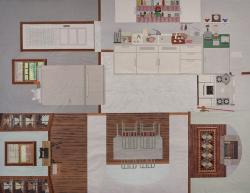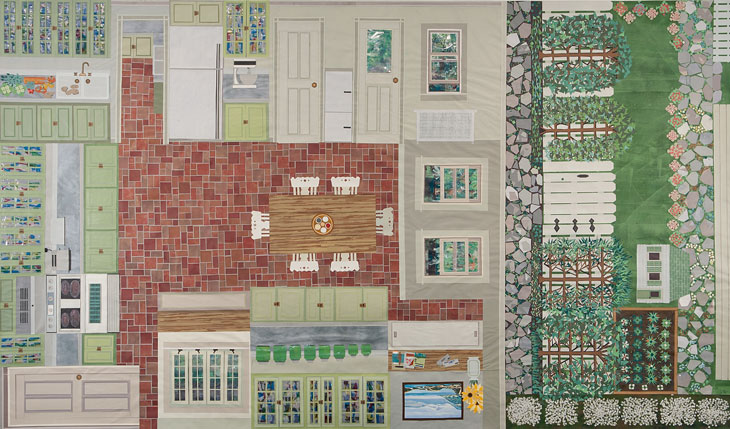
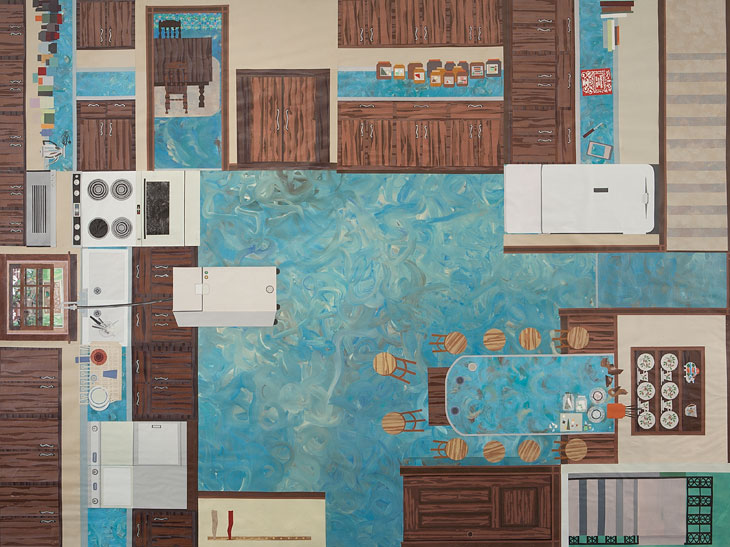
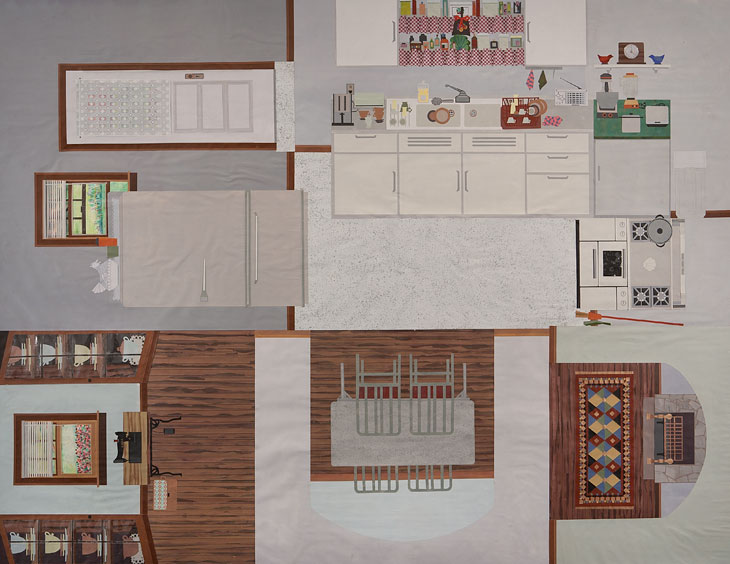
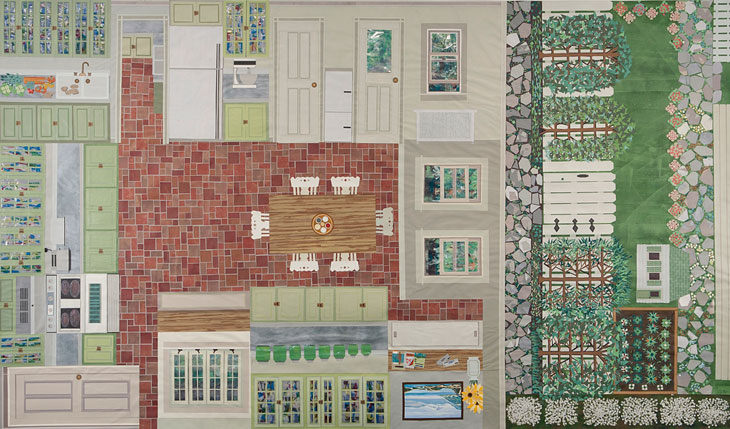
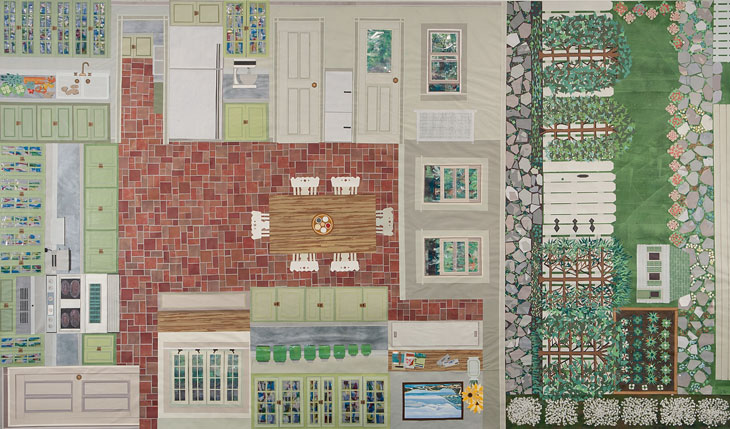
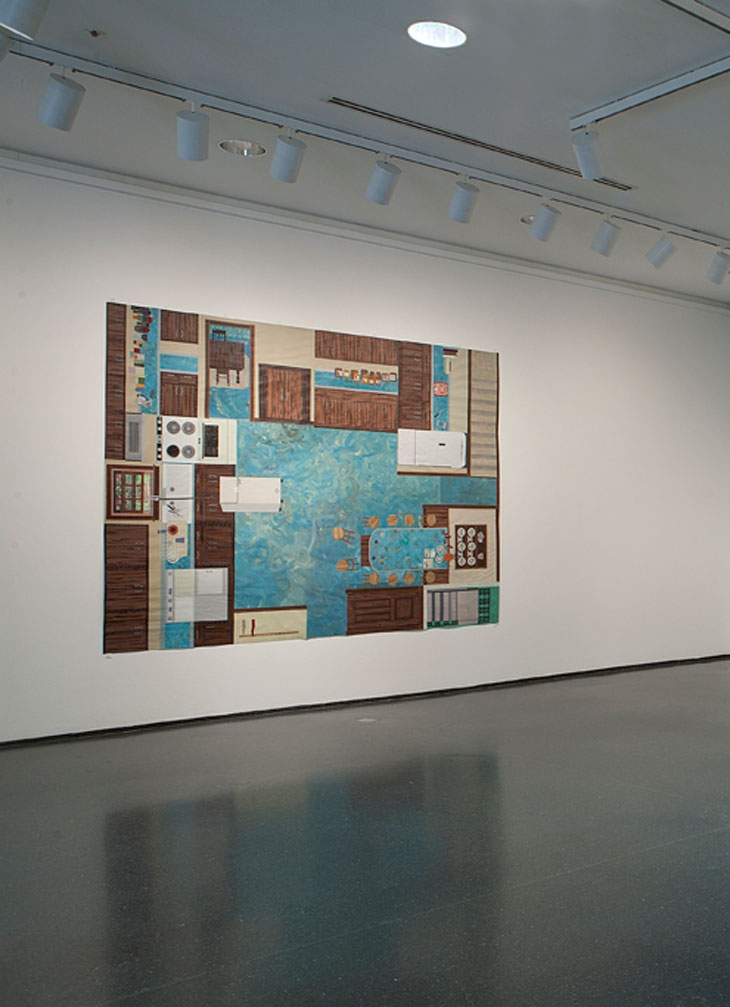
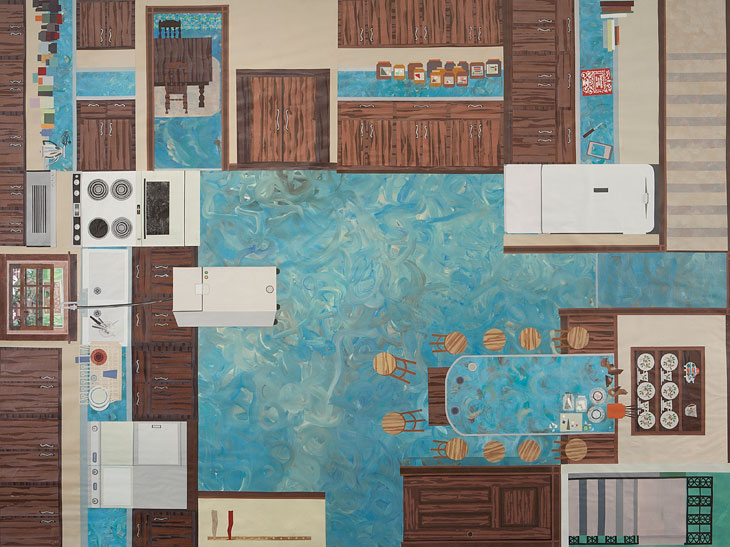
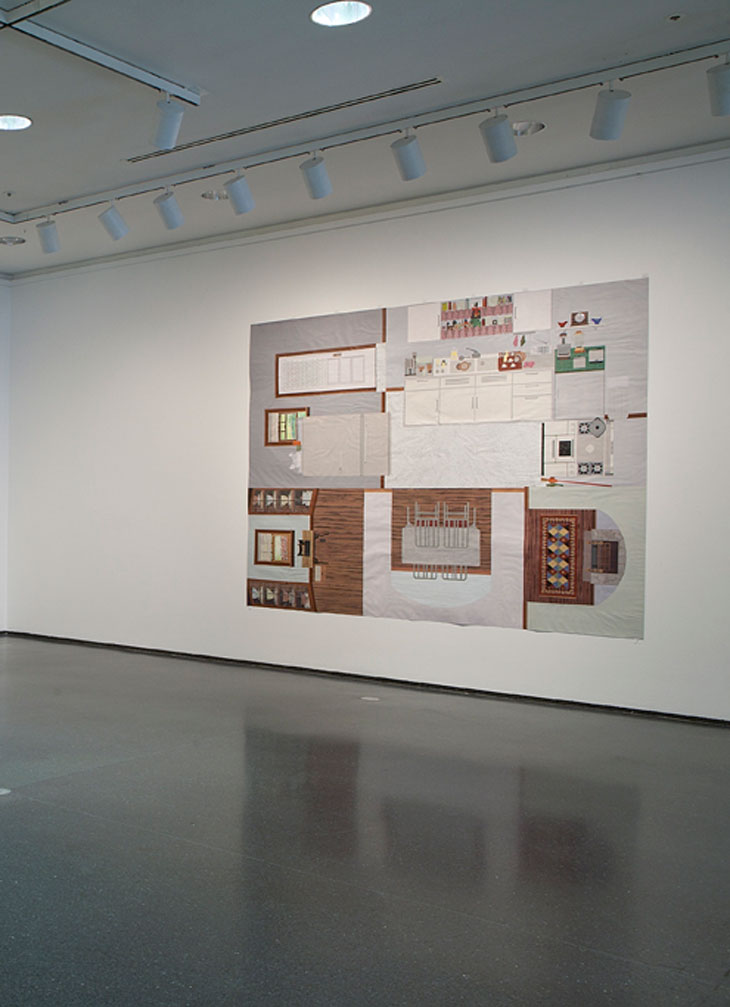

Ann Toebbe
Ann Toebbe’s flattened interiors have the look of both a board game and a cut-out paper home for dolls; either way, her architectural spaces are unpopulated, hinting sarcastically, in both title and details, at a social type who’ll slot in nicely. In The Doctor’s Wife, a family kitchen is laid out diagrammatically. There are the containers for foodstuffs, arranged in descending order of size; the food processor, ready to whizz; the vegetables, freshly chopped by the sink; the perfect garden, with its bowers and white picket fence.
The imagined occupant is externally defined (by her spouse’s occupation, by the stuff in her house), and her lack of interiority is implied, most obviously, by her absence: she’s not there because, well, she’s not there, even when she is. The Grocer’s Wife is less socially elevated, as the title sardonically hints: its linoleum floor, in squiggled paint at odds with Toebbe’s schematic rendering of cupboards and stools, suggests a humbler income, though the interior is no less oppressively over determined.
Imagined occupants must move in line with the space they occupy, and it’s hard to imagine anyone other than a cut out character, shuffled around by game-playing children, inhabiting such a place. This, perhaps, is Toebbe’s point – that an ideal of personhood is no more inhabitable than a flattened-out interior.
This lends her works their ghostliness; life reduced to a pattern is still haunted by the viewer’s projected inhabitants, like children’s toys given strange life through the power of the imagination.
Text by Ben Street








